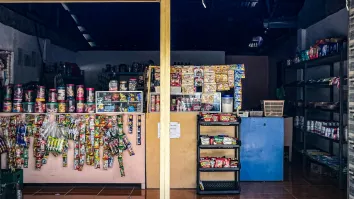
Answering consumer needs amidst the push for digital transformation
The push to become more customer-centric makes digitalisation inevitable.
The challenges in operations to meet the ever changing needs of consumers have been made easier because of the rise of digitalisation. However, this is a double-edged sword as the digital era has also forced companies to adapt to new methods of monitoring and controlling the supply chain.
In the recently concluded joint webinar by Retail Asia and Board Asia Pacific, How Digital Transformation Is Shaping the Retail Supply Chain, top executives discussed the effect of digitalisation in Asia and how businesses and retailers can create opportunities in the age of the digital era.
State of the supply chain
Opening the discussion, Head of Supply Chain Marketing of Board International David Food gave a quick overview of the state of the supply chain.
Food mentions that before the pandemic, retailers who get products offshore mainly try to get from the cheapest source. But COVID-19 made everyone desperate for supplies and decided to get products and supplies from whoever may deliver.
Food said that as the world stabilized, a lot of manufacturers and retailers have tried nearshoring to find more suppliers with more lead times and less risks of delay through shipment.
This has been the main challenge of the supply chain as many areas experience limited resources, skills and capabilities.
“And now as people are getting a balance, they're now trying to move to a mixed view, right-shoring where they're looking offshore for the cheapest source, but they're looking nearshore for flexibility and capability,” Food said.
That sourcing not only includes the original source, but also includes how it gets from the factory to the store.
Customer-centric
Many companies have talked about putting the customer experience in the center whenever they talked about the omnichannel concept however Food believes the reality is these are siloed experiences.
As an example, Food discussed a research he had done with Warwick University where they identified that letting customers buy a product online and give them the option to go to the retail store to try to return them was not possible.
“Physically, of course it was but from a siloed logical reward and measure point of view, this was limited and constrained,” Food explained.
This just means that having customer experience at the center of the omnichannel concept is not enough. Food said you have to have planning at the center to enable alternatives to be looked at by customers.
“And those things require the right measures within the business to reward the store for delivering and to reward the customer for enjoying the experience and taking the products,” Food added.
To remain customer-centric, digital transformation is inevitable.
Digital transformation not only ensures that departments are connected and projects clear visibility but it ensures that there are measures that guarantee that the customer experience is truly customer-centric.
“And that requires increased flexibility and that increased flexibility really requires a greater digitization of the journey from the supplier through to the consumer,” Food added.
Digital transformation
During the panel discussion, the Merchandising Director of Slowear Luca Berga agreed that digital transformation is not an option even if you are a small business.
“Generally speaking, in supply chains there is a need for information and acceleration. That basically requires digital transformation. When you start facing a demand which is multichannel, this forces you to adopt a system and digital tools,” Berga said.
Meanwhile, Food added that a digital connection between operations and sales are vital for retailers to maintain.
Food explained that what companies don't want to be doing is promoting products that they have in short supply, or have large amounts of supply that they're not promoting through the business. This then gives the connection of price elasticity and the ability to flex pricing in particular the online categories, giving that trade off between sales and operations.
Lastly, Food said that retailers should make use of their data to make their business more differential thus making themselves more competitive.



















 Advertise
Advertise





